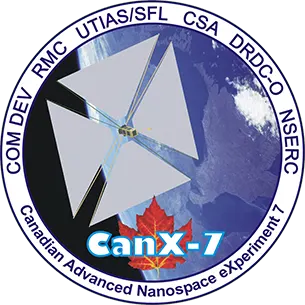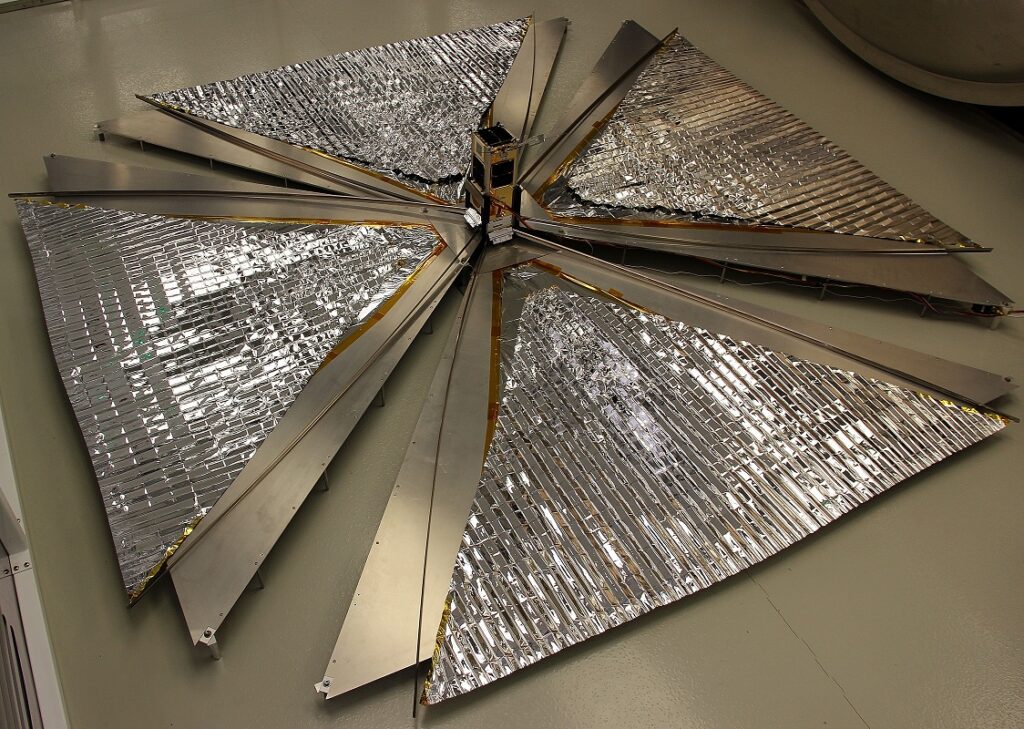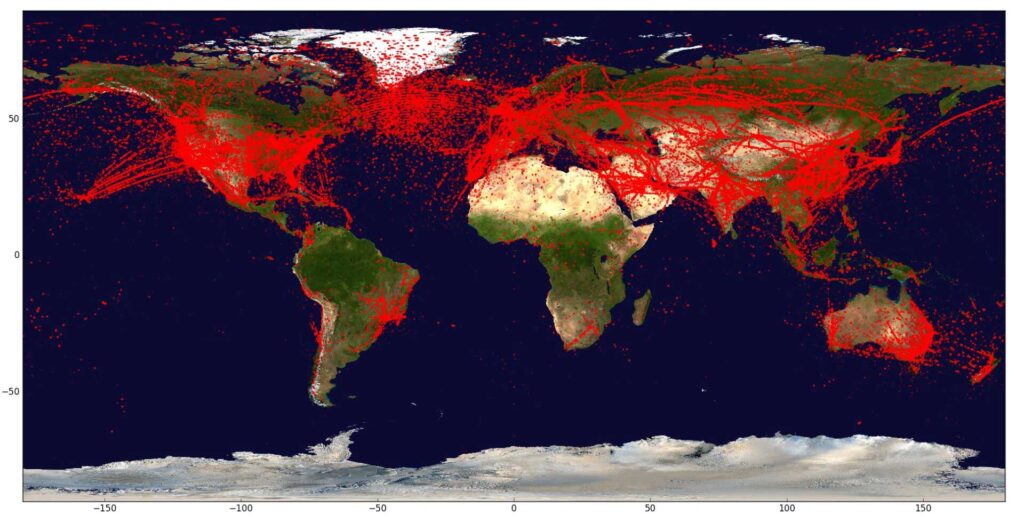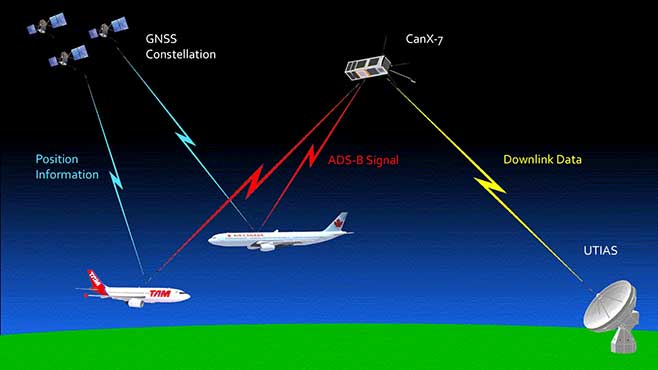CanX-7
Automatic Dependent Surveillance – Broadcast (ADS-B) and Drag Sail Deorbiting



CanX-7, a three-kilogram, 10 x 10 x 34 cm satellite was developed by SFL and launched on 26 September 2016. The satellite successfully completed a seven-month aircraft tracking campaign before deploying its drag sails in May 2017 to demonstrate drag-sail based deorbiting. The mission was funded by DRDC (Defence R&D Canada), Ottawa, NSERC (Natural Sciences and Engineering Research Council) of Canada, and COM DEV Ltd.
All four drag sails deployed successfully, as confirmed by on-board telemetry and ground-based optical observation. The altitude of the satellite steadily decreased at a noticeably faster rate than it would have without the sails deployed.
The CanX-7 mission successfully demonstrated the SFL drag sail’s effectiveness at achieving the deorbiting recommendations of the Inter-Agency Space Debris Coordination Committee (IADC), that satellites deorbit within 25 years after the completion of their mission or within 30 years of launch if they cannot be parked in less dense orbits.
The CanX-7 demonstration was critical to ensuring that future missions adhere to debris mitigation guidelines, both to enable the licensing of these missions by national authorities and to avoid cluttering space after the service life of a satellite has come to an end.
Prior to demonstrating its four 1-m2 drag sails, CanX-7 was the first North American satellite to successfully demonstrate ADS-B (Automatic Dependent Surveillance-Broadcast) message collection with a receiver provided by COM DEV Ltd. Over 4.5 million messages from aircraft were received over a seven-month period.

ADS-B is a cooperative surveillance technology for tracking aircraft. Detecting ADS-B signals from space enables enhanced global awareness of aircraft identities, locations, and headings. CanX-7’s ADS-B operational phase also demonstrated long-term stowage of its drag sails on orbit.
The drag sail results provide the basis for low cost, modular, and customizable deorbiting devices for nanosatellites and microsatellites in low Earth orbit.

